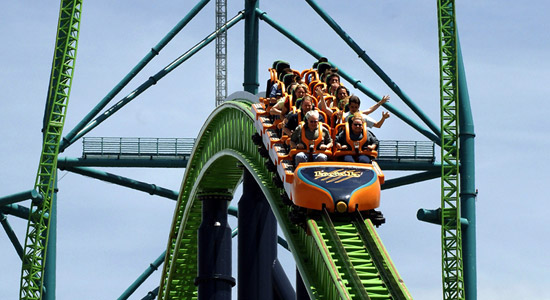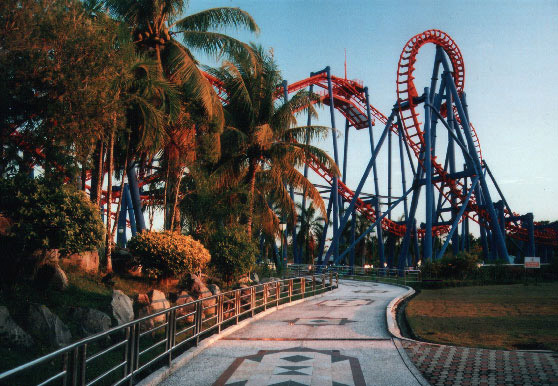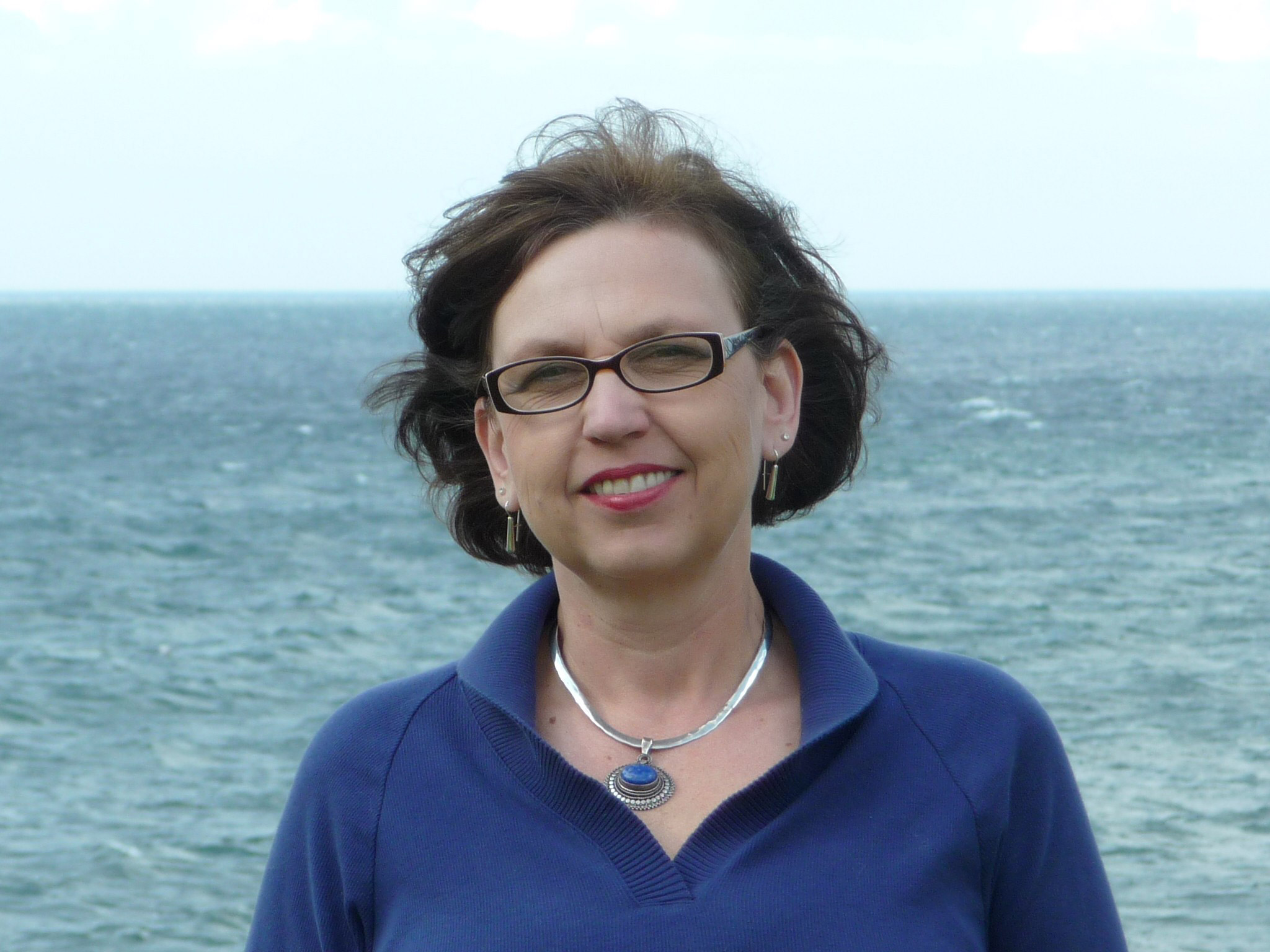Feature: Roller Coaster Physics

When Elizabeth Smallwood’s 11th and 12th graders climb onto the rollercoaster at Six Flags theme park near Buffalo, N.Y., it won’t be just for the thrill. They’ll be concentrating on how gravity affects acceleration, monitoring their own queaziness and trying to assess any temporary effects on the brain.
The students’ work won’t stop when the ride ends. They will study the chemical properties of theme park materials, weighing effects of weather and temperature, dig into the biology of motion sickness, and learn about career possibilities in park development, such as mechanical or electrical engineering. Finally, toward the end of 13 weeks, and after a second theme park visit, students will design their own park, complete with blueprints and statistics on acceleration and velocities, and produce a marketing plan.

Image from Wikimedia Commons
This Tapestry Charter School elective, “Amusement Park Physics,” is a typical Smallwood course. An 18-year veteran who has taught everything from fifth grade science to AP physics, she strives to combine rigor, fascinating subject matter and serious field work in classes that approach topics from a variety of scientific directions.
“A traditional science class, such as chemistry, doesn’t always show students where they can go with a chemistry college program, and most careers aren’t as pure as that,” explains Smallwood, who is also an adjunct professor at Niagara University. “Most careers combine knowledge from all the different courses that a math and science student studies. My electives attempt to fix that deficit.”
Her “Chemistry of Art” class won a $10,000 Toyota grant. For it, students produce their own oil paints with help from a paint company chemist, make sepia-colored photo prints, and work on the restoration of outdoor sculptures. They also visit the Corning glass museum, where they create their own glass products.
 In making her courses engaging, Smallwood is perhaps aided by having “never really liked” grade school. Based on her experience in college, “I was convinced that I could do a better job” than her former teachers, she says.
In making her courses engaging, Smallwood is perhaps aided by having “never really liked” grade school. Based on her experience in college, “I was convinced that I could do a better job” than her former teachers, she says.
Her topics, such as the physics of electromagnetic toys, optics and green sciences, are likely to have career potential. “Many of the jobs that are growing are in green technology, energy, medical, transportation – all science based careers,” Smallwood says. Often, there’s an engineering component to her classes, be it problem solving, application of concepts to real work situations, design or modeling, and Smallwood is intent on overcoming students’ lack of knowledge about the field.
Lynn Bass, principal of Tapestry High School, says of Smallwood, “Not only is Liz inspiring students, but she’s providing effective professional development for our staff. This summer she taught inquiry based methods to colleagues from all disciplines.” Bass has firsthand evidence that Smallwood’s approach works. “My own son is a student in our charter,” she says, “and now he speaks of being an engineer. He comes home talking about physics. As a principal and a parent, I couldn’t ask for more.”
Filed under: Special Features








